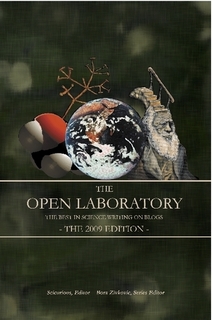There are 19 new articles in PLoS ONE today. As always, you should rate the articles, post notes and comments and send trackbacks when you blog about the papers. You can now also easily place articles on various social services (CiteULike, Mendeley, Connotea, Stumbleupon, Facebook and Digg) with just one click. Here are my own picks for the week - you go and look for your own favourites:
Plant Species and Functional Group Combinations Affect Green Roof Ecosystem Functions:
Green roofs perform ecosystem services such as summer roof temperature reduction and stormwater capture that directly contribute to lower building energy use and potential economic savings. These services are in turn related to ecosystem functions performed by the vegetation layer such as radiation reflection and transpiration, but little work has examined the role of plant species composition and diversity in improving these functions. We used a replicated modular extensive (shallow growing- medium) green roof system planted with monocultures or mixtures containing one, three or five life-forms, to quantify two ecosystem services: summer roof cooling and water capture. We also measured the related ecosystem properties/processes of albedo, evapotranspiration, and the mean and temporal variability of aboveground biomass over four months. Mixtures containing three or five life-form groups, simultaneously optimized several green roof ecosystem functions, outperforming monocultures and single life-form groups, but there was much variation in performance depending on which life-forms were present in the three life-form mixtures. Some mixtures outperformed the best monocultures for water capture, evapotranspiration, and an index combining both water capture and temperature reductions. Combinations of tall forbs, grasses and succulents simultaneously optimized a range of ecosystem performance measures, thus the main benefit of including all three groups was not to maximize any single process but to perform a variety of functions well. Ecosystem services from green roofs can be improved by planting certain life-form groups in combination, directly contributing to climate change mitigation and adaptation strategies. The strong performance by certain mixtures of life-forms, especially tall forbs, grasses and succulents, warrants further investigation into niche complementarity or facilitation as mechanisms governing biodiversity-ecosystem functioning relationships in green roof ecosystems.
Cerebral Asymmetries: Complementary and Independent Processes:
Most people are right-handed and left-cerebrally dominant for speech, leading historically to the general notion of left-hemispheric dominance, and more recently to genetic models proposing a single lateralizing gene. This hypothetical gene can account for higher incidence of right-handers in those with left cerebral dominance for speech. It remains unclear how this dominance relates to the right-cerebral dominance for some nonverbal functions such as spatial or emotional processing. Here we use functional magnetic resonance imaging with a sample of 155 subjects to measure asymmetrical activation induced by speech production in the frontal lobes, by face processing in the temporal lobes, and by spatial processing in the parietal lobes. Left-frontal, right-temporal, and right-parietal dominance were all intercorrelated, suggesting that right-cerebral biases may be at least in part complementary to the left-hemispheric dominance for language. However, handedness and parietal asymmetry for spatial processing were uncorrelated, implying independent lateralizing processes, one producing a leftward bias most closely associated with handedness, and the other a rightward bias most closely associated with spatial attention.
Serine proteases are a major component of viper venoms and are thought to disrupt several distinct elements of the blood coagulation system of envenomed victims. A detailed understanding of the functions of these enzymes is important both for acquiring a fuller understanding of the pathology of envenoming and because these venom proteins have shown potential in treating blood coagulation disorders. In this study a novel, highly abundant serine protease, which we have named rhinocerase, has been isolated and characterised from the venom of Bitis gabonica rhinoceros using liquid phase isoelectric focusing and gel filtration. Like many viper venom serine proteases, this enzyme is glycosylated; the estimated molecular mass of the native enzyme is approximately 36kDa, which reduces to 31kDa after deglycosylation. The partial amino acid sequence shows similarity to other viper venom serine proteases, but is clearly distinct from the sequence of the only other sequenced serine protease from Bitis gabonica. Other viper venom serine proteases have been shown to exert distinct biological effects, and our preliminary functional characterization of rhinocerase suggest it to be multifunctional. It is capable of degrading α and β chains of fibrinogen, dissolving plasma clots and of hydrolysing a kallikrein substrate. A novel multifunctional viper venom serine protease has been isolated and characterised. The activities of the enzyme are consistent with the known in vivo effects of Bitis gabonica envenoming, including bleeding disorders, clotting disorders and hypotension. This study will form the basis for future research to understand the mechanisms of serine protease action, and examine the potential for rhinocerase to be used clinically to reduce the risk of human haemostatic disorders such as heart attacks and strokes.













